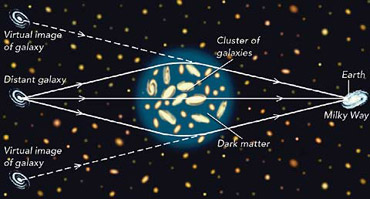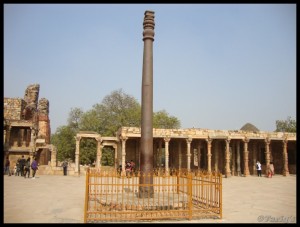We are made of stars. Stars and we are made of the same basic matter. But stars and we are all only ~20% of matter that is in the universe. What about the rest 80%?
The rest 80% is what we refer to as the dark matter (Note: Dark matter has _nothing_ to do with black holes).
If we could see dark matter, it should seem to us that the universe is made of a huge skein/mess of dark matter with stars shining brightly at various spots where the mesh strands cross each other.
Now if you can’t see the dark matter, how do we know that it exists? Simple, by the phenomenon of the gravitations lens. I have mentioned a gravitational lens before. But I will re-visit.
Huge massed body’s gravity bend light. That is the basis of the gravitational lens we observe in space. A picture from Hubble was a good example. In the picture, observers saw small-lighted spots along the edges of a cluster of galaxies. Soon they realized that these spots were galaxies behind the cluster of galaxies. The cluster of galaxies was acting like a gravitational lens and squashing the light from behind into a smaller area.
They tried to calculate the mass of matter needed to make such a powerful gravitational lens and then calculated the mass of the galaxies in that cluster and there was a HUGE difference. When they accounted for the dark matter ratio, the scores settled perfectly.
Is There Dark Matter in Earth’s Vicinity?
No, and a yes. Depending on what we refer to as vicinity. Close to our solar system, we do not have any. But given the huge size of the universe, there is dark matter all around us and close to us in that proportion.
Image: From naturalhistorymag.com by Illustration by Ian Worpole


